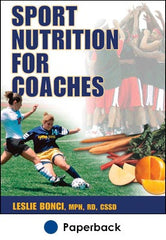Travel is never easy. It may cause problems that impair your athletes’ performance, such as altered sleep schedules, skipped meals, dehydration (especially with air travel), food safety issues, and, if you’re traveling abroad, the availability and accessibility of familiar foods. Your athletes need to think about packing food as a priority, not an afterthought.
Make a travel food plan. Encourage your athletes to pack food, and if you are traveling by air remind them that they cannot bring liquids onto the plane. However, athletes can bring many food items that will be allowed through security, and they can pack other items in their checked luggage.
Give your athletes and their parents a list of appropriate snack items. Explain to your athletes that you want them to think about performance foods, which means foods that provide carbohydrate, protein, and fat. It is certainly fine to have a few cookies or a handful of chips, but if your athletes gorge on candy, soda, chips, and doughnuts, they probably will not to be ready to play.
Make sure that each of your athletes receives this list and packs some of the food items on the list. Suggest that your athletes bring a hot pot and adapter so that they can prepare pasta, hot cereal, soup, or chili in their room. Besides being more healthful, eating these foods is also much less expensive than eating out.
Another idea is to assign food items: Ask some athletes to bring cereal, ask some to bring juice, and ask others for bowls, cups, and utensils. You can also assign a snack coach or hydration coach whose job is to make sure that snacks and fluids are available before and after practice. If you are lucky enough to have parents who travel with the team, ask them to coordinate snacks and investigate eating venues in the places you travel to. Do as much planning as you can, because food is one of the few items you can control.
If you travel by car or by bus, you can bring more items compared with when you’re flying. Consider packing a cooler with milk, yogurt, lunch meats, condiments, and fresh fruits and vegetables.
Because time is always at a premium when you travel, use your food coach or food scout to survey the team about their meal preferences after games. If the team will eat at a family-style restaurant after a game, get a menu ahead of time, ask each athlete for their menu choice, and call the restaurant so they can be prepared. Your food coach can call the restaurant to give an estimated time of arrival so you don’t have to wait a long time before the food appears.
Another option is to order the food to be delivered or picked up. This doesn’t limit you to pizza, however. For example, you could order Chinese, Mexican, Italian, or Thai food. This is a pleasant surprise for your athletes and puts some variety into the food choices.




